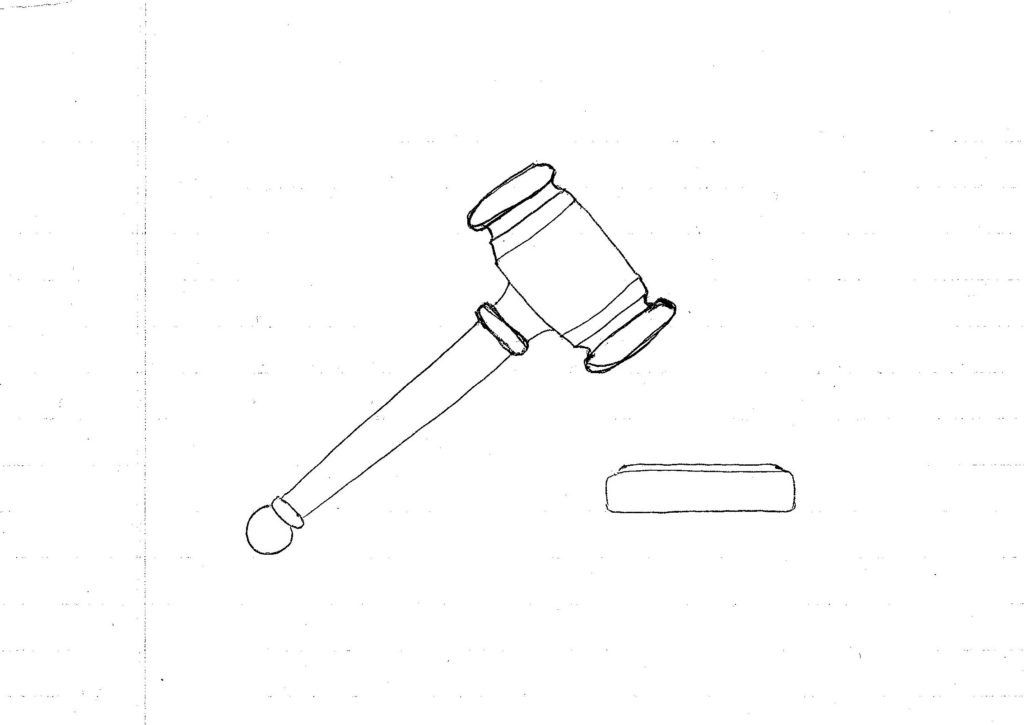This is a follow up to my article called “Getting Around an ‘As-is’ Used Car Sale.” If you haven’t read that article, you should review it. I discuss five different legal theories you can use to try to get around an as-is car sale.
You should also familiarize yourself with the small claims process. That process is covered well by the court’s self-help resources so I am not going to address that here.
This article will discuss the strategy, the complaint, and the presentation at the time of hearing.
The Big Picture Strategy
The first thing you need to understand is the context of the situation. When you go to court, you are trying to prove to an independent trier-of-fact—a jury of your peers or a judge—that the defendant you’ve named owes you money. To do this, you need to understand four things: (1) the cause of action, (2) the elements of the cause of action, (3) the burden of proof, and (4) the evidence available to you.
1. The Cause of Action
A “cause of action” is a legal basis for telling the court you want money from the defendant. For example, if you had a contract and someone breached it, your cause of action is “breach of contract.” If someone injured you in a car accident, your cause of action would be “negligence.”
In my article, I addressed five potential causes of action that can help you get around an “as-is” sale: (1) Violation of implied warranties (a very technical argument), (2) False Advertisement/Fraud/misrepresentation, (3) Failure to Make Mandatory Disclosures, (4) Violation of Express Warranties, (5) Deceptive Trade Practices.
If you are going to small claims, you should identify what cause of action you are basing your claim upon. As a hint, I would say most small claims cases for used car sales are going to assert fraud or misrepresentation or, if your case is against a dealer, Deceptive Trade Practices.
2. The Elements to a Cause of Action
Once you identify your cause of action, you need to then understand the elements of that cause of action that you need to show in order to be granted relief. The elements of a cause of action are essentially boxes that you need to check to establish your right to recover.
For example, a breach of contract claim will require you to check the boxes on the following elements:
- There was a valid contract.
- The defendant breached the contract.
- The breach caused damages to you.
- the amount of the damages.
On a breach of contract claim, you would need to show evidence to establish each of those elements. You can find what elements you need to prove using the model Idaho Civil Jury Instructions: https://isc.idaho.gov/main/civil-jury-instructions. If you are bringing a fraud claim, find the instruction for fraud and that will help you know what you need to show.
3. The Burden of Proof
As the plaintiff, you have the burden of proving each of the necessary elements. In most cases, the burden is what is called the “preponderance of the evidence” standard. In simple terms, this means that the trier of fact has to look at your claim and determine that your story is the more likely story. In other words, the trier might say, “I believe you 51%, so I guess I have to go with you.”
Some causes of action, such as fraud, require you to prove your case “by clear and convincing evidence.” This is a high standard.
4. The Evidence
In determining whether you can carry your burden of proof, you need to look at all the available evidence and basically guess what you think a jury or judge will decide based on that evidence.
To put it in context, do you think a jury would look at all the evidence you have and say, “Yes, I think it is more likely than not that that element of the cause of action is satisfied.” You then ask that question for each element of the claim. The outcome of cases are unpredictable because we can’t read people’s minds. So we don’t really know how the person that will be called on to decide these issues will view things.
Once you understand your cause of action, the elements within that cause of action, your burden of proof, and the evidence, you are ready to present your case in small claims.
The Complaint
Small claims complaints do not need to be detailed. However, it is important to keep in mind that you will be trying to convince the judge to rule in your favor and the judge is likely legally trained. The judge will therefore be looking at your case from that perspective. The judge will want to see the cause of action and the elements and see that your evidence meets the burden of proof on each element. With this in mind, it may benefit you to identify your cause of action and provide some narrative to explain how the elements of the cause of action are met.
Here is an example complaint which is based on the Idaho Consumer Protection Act (again, this is a route you may want to go in a case against a dealership):
The defendant engaged in violation of the Idaho Consumer Protection Act by:
1. [state a provision of Idaho Code 48-603 you believe the defendant violated and explain how it was violated] ex: Falsely stating that the brakes were in good condition when they were not in good condition in violation of Idaho Code 48-608(17).
2. [Also look through the Idaho Rules of Consumer Protection and do the same thing]
Because of the defendant’s conduct, I was damaged. [Explain why the damages were caused by the violation].
You can word your complaint however you see fit. The important thing is that you address all the requirements set forth in Idaho Code 48-608.
What to do in Court
When you are presenting your case in court, you simply walk the judge through everything I described above. Small claims courts are fairly informal, you should be able to tell the judge your cause of action and state the elements of the cause of action.
For example, you might say:
Good morning your honor. I’m asserting a claim against the Defendant for a violation of the consumer protection act. That act requires me to show by a preponderance of the evidence that the Defendant engaged in a violation of the act and that this violation caused damages to me.
In this case, the dealer made false statements regarding the mechanical condition of the vehicle when I was purchasing it from him. Here is a copy of the advertisement that says the vehicle was in great shape. Here is a copy of my mechanic diagnosis that says the bottom of the vehicle is completely rusted out and is not safe to be driven. I would not have purchased the vehicle if the dealer did not provide that false information.
Therefore, I am requesting relief under the ICPA. I want the dealer to pay my money back.
It may not go exactly like that, but the gist is that you need to show the judge that you satisfy the elements of an ICPA claim using the evidence available to you.

